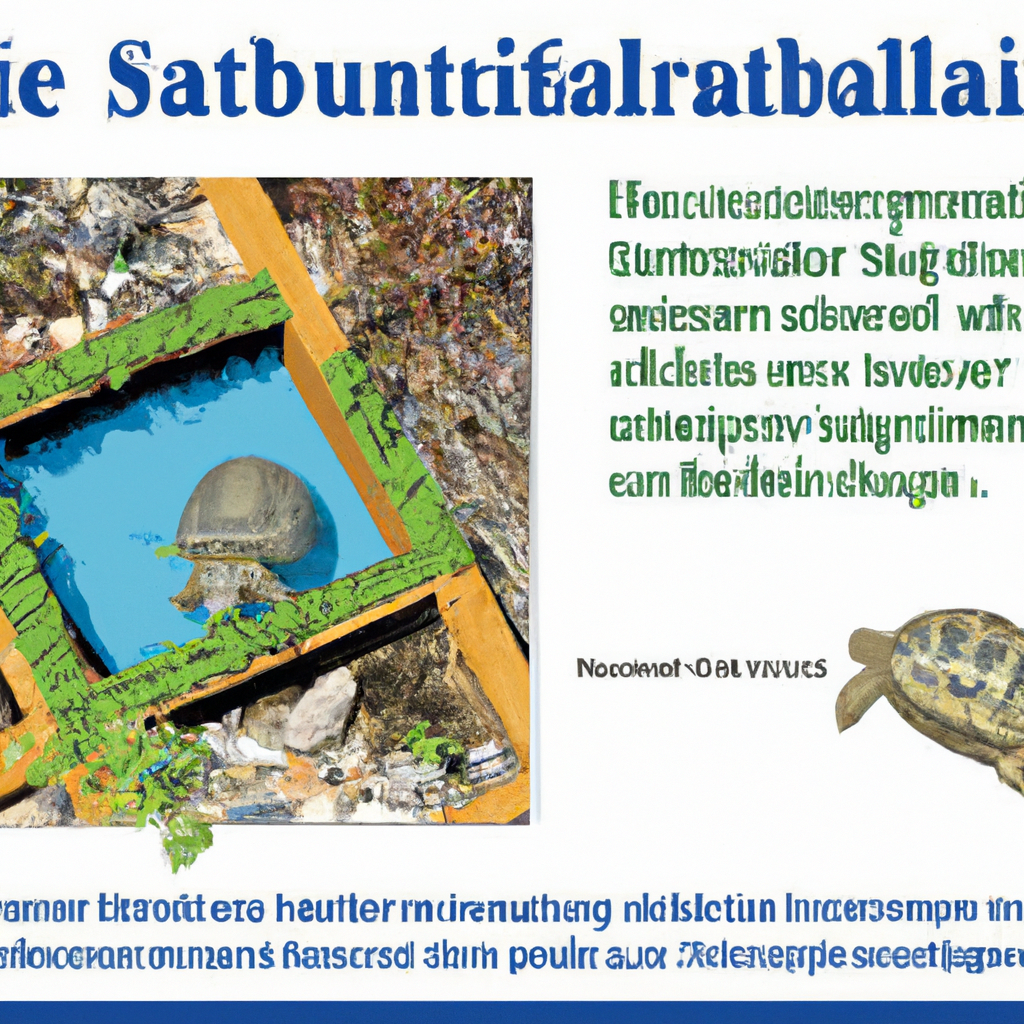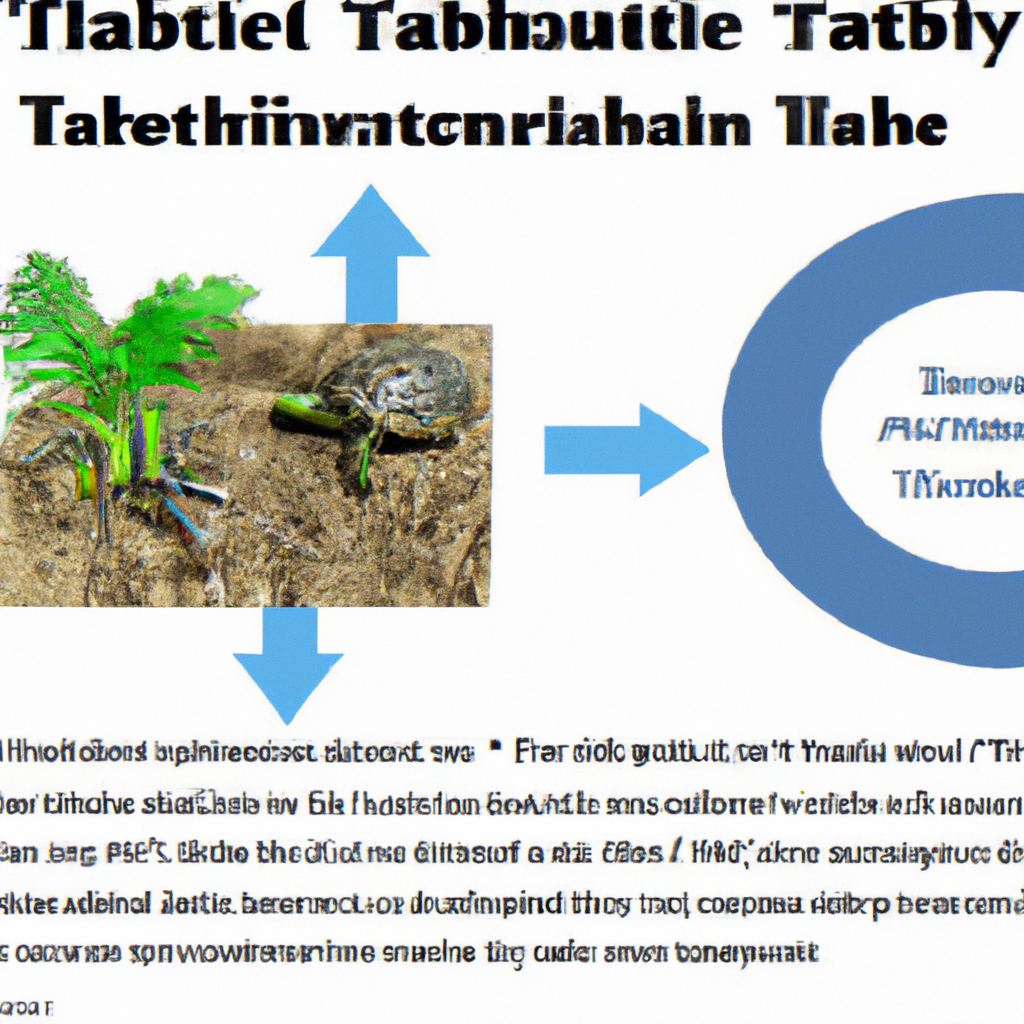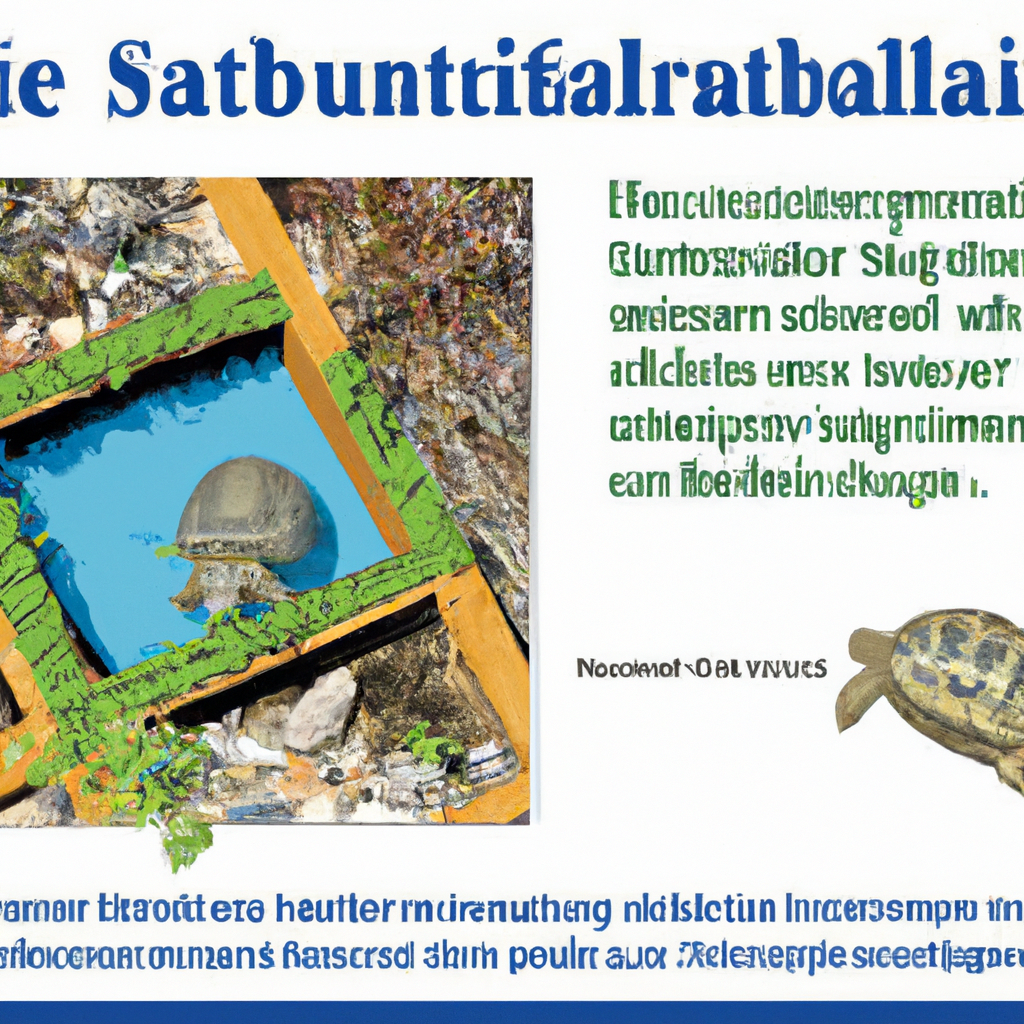So you finally decided to bring a semi-aquatic turtle into your home. Great choice! These fascinating creatures make wonderful pets, but they require a special habitat to thrive. In this article, we’ll explore the importance of creating a naturalistic environment for your new aquatic friend. From mimicking their natural habitat to providing the right temperature and lighting, we’ll guide you through the process of setting up a perfect home for your semi-aquatic turtle. Get ready to dive into the world of turtle care and create a captivating haven for your new pet.
Choosing a Suitable Tank
Size of the Tank
When it comes to choosing a tank for your semi-aquatic turtle, size matters. You want to provide your turtle with a spacious and comfortable environment that allows it to swim, bask, and explore. As a general rule of thumb, the tank should have at least 10 gallons of water capacity per inch of your turtle’s shell length. However, it’s always better to go bigger if you have the space and resources.
Material of the Tank
The material of the tank is another important consideration. Glass tanks are the most common choice due to their visibility and durability. They also allow for unobstructed viewing of your turtle. However, acrylic tanks can be a suitable alternative as they are lighter and less prone to cracking or shattering. Whichever material you choose, ensure that it is sturdy enough to withstand the weight of water and decorations.
Shape and Design of the Tank
The shape and design of the tank can enhance your turtle’s habitat and overall aesthetic. Rectangular tanks are the most practical as they provide ample swimming space and better heat distribution. However, if you want to add a unique touch to your turtle’s habitat, you can opt for a custom-made tank with an irregular shape. Just make sure the design doesn’t compromise the turtle’s comfort and ability to move around freely.
Setting Up the Tank
Substrate
Choosing the right substrate for your semi-aquatic turtle is crucial for creating a naturalistic environment. River rocks or smooth pebbles make excellent choices as they mimic the natural habitats of turtles. These substrates are easy to clean and maintain and also provide a solid surface for your turtle to rest on. Avoid using sand or gravel as they can be ingested by your turtle, leading to digestive issues.
Decorations
To make your turtle’s tank more visually appealing and stimulating, consider adding decorations such as driftwood, rocks, and artificial plants. These decorations not only create a more natural habitat but also provide hiding spots and areas for your turtle to explore. Just ensure that the decorations are securely placed, so they don’t pose a risk of falling or causing injury to your turtle.
Water Area
Your semi-aquatic turtle requires both land and water areas to thrive. The water area should be deep enough for swimming, with a depth that allows the turtle to fully submerge. It’s essential to provide a ramp or basking platform that allows easy access to the dry land area. This will give your turtle the opportunity to bask and regulate its body temperature, which is crucial for its overall health.

Choosing the Right Lighting
UVB Lighting
Proper lighting is vital for the health and well-being of your semi-aquatic turtle. UVB lighting is crucial for turtles as it enables them to produce vitamin D3, which helps in calcium absorption. Without sufficient UVB exposure, turtles can develop metabolic bone disease, which can lead to deformities and other serious health issues. A fluorescent UVB light specifically designed for reptiles is recommended, and it should be placed within the tank at the optimal distance specified by the manufacturer.
Basking Light
Alongside UVB lighting, providing a suitable basking light is crucial. Basking lights mimic the natural sunlight that turtles need to regulate their body temperature and aid in digestion. Ceramic heat emitters or incandescent bulbs can be used to provide the necessary heat for basking. It’s important to place the basking light in a way that creates a temperature gradient within the tank, with the basking area being the warmest and the water area slightly cooler.
Maintaining Proper Temperature
Heating the Tank
Maintaining an appropriate temperature within the tank is essential for your semi-aquatic turtle’s health and well-being. Turtles are ectothermic, meaning they rely on external sources of heat to regulate their body temperature. Using an aquarium heater with a thermostat is an excellent way to ensure that the water temperature remains within the ideal range for your turtle’s species. The basking light discussed earlier will provide the necessary heat for the land area.
Thermometers and Thermostats
To ensure the temperature in the tank stays within the desired range, it’s crucial to use thermometers and thermostats. A thermometer designed for aquatic environments can be placed inside the tank to monitor the water temperature accurately. Additionally, using a thermostat with a probe will allow you to control the temperature of the water heater, providing a stable and comfortable environment for your turtle.

Providing a Balanced Diet
Choosing the Right Food
A well-rounded and nutritious diet is crucial for the overall health and longevity of your semi-aquatic turtle. Turtles are omnivorous, so their diet should consist of a combination of animal protein, such as commercial turtle pellets or live insects, and plant matter, such as leafy greens and vegetables. It’s important to vary their diet and offer a wide range of food items to ensure they receive all the essential nutrients.
Feeding Schedule
Establishing a regular feeding schedule is beneficial for your turtle’s digestion and overall routine. Young turtles should be fed daily, while adult turtles can be fed every other day or a few times a week, depending on their species and size. It’s essential to monitor your turtle’s weight and adjust the feeding schedule accordingly to prevent overfeeding or obesity.
Managing Water Quality
Filtration System
Maintaining clean and healthy water is vital for your semi-aquatic turtle’s well-being. Invest in a reliable filtration system that is appropriate for the size of your tank. A combination of mechanical, biological, and chemical filtration will help remove waste and impurities from the water. Regularly maintaining and cleaning the filter will ensure it remains effective in keeping the water clean.
Regular Water Changes
In addition to the filtration system, regular water changes are necessary to maintain proper water quality. Partial water changes should be conducted every 1-2 weeks, depending on the size and stocking level of your tank. Removing a portion of the dirty water and replacing it with fresh, dechlorinated water will help remove excess waste and chemicals, ensuring a healthier environment for your turtle.
Creating a Hiding Spot
Caves or Hideouts
Semi-aquatic turtles need a safe and secure hiding spot within their tank, where they can retreat and feel protected. Adding caves or hideouts made from natural materials, such as rocks or logs, will provide your turtle with the privacy and security it needs. These hiding spots can also serve as additional basking areas if positioned correctly.
Plants and Vegetation
Incorporating live or artificial plants into your turtle’s tank not only adds visual appeal but also enhances their natural habitat. Live aquatic plants such as water lettuce or anacharis can help improve water quality by absorbing nitrates and providing oxygen. Artificial plants can be used as a low-maintenance alternative if you prefer not to deal with live plants. Whichever option you choose, make sure the plants are securely rooted and pose no risk of ingestion or entanglement for your turtle.
Introducing a Companion
Species Compatibility
If you’re considering adding another turtle to your tank, it’s essential to ensure species compatibility. Some turtles can be aggressive towards each other, especially when housed together in confined spaces. Research the specific species you’re interested in and consult with experts or a veterinarian to determine if they can cohabitate peacefully. Always provide ample space and resources for each turtle to avoid territorial disputes.
Quarantine Period
Before introducing a new turtle to your tank, it’s crucial to quarantine them first. This quarantine period allows you to observe the new turtle and ensure it is healthy and free from any contagious diseases or parasites. Quarantining in a separate tank will also prevent any potential spread of diseases to your existing turtle(s). The quarantine period should be a minimum of 4-6 weeks, during which the new turtle can be monitored and treated if necessary.
Maintaining a Clean Environment
Regular Tank Cleaning
Keeping your turtle’s tank clean is essential for their health and well-being. Regularly check and remove any uneaten food, waste, or debris from the tank. Use a siphon or aquarium vacuum to clean the substrate and remove accumulated waste. Wipe down the walls of the tank with an aquarium-safe sponge or cloth to remove any algae buildup. Regular maintenance will help prevent the growth of harmful bacteria and maintain a clean and healthy environment for your turtle.
Preventing Algae Growth
Algae growth is a common issue in turtle tanks due to the presence of light and nutrients. To prevent excessive algae growth, ensure that the tank is not exposed to direct sunlight, as this can promote algae growth. Additionally, maintaining proper water parameters, such as pH and nutrient levels, can help prevent algae blooms. If algae buildup occurs, consider adding a few algae-eating aquatic snails or fish species that can help keep the tank clean.
Monitoring Health and Behavior
Signs of Illness
As a responsible turtle owner, it’s essential to monitor your turtle’s health and be aware of any signs of illness. Common signs of illness include loss of appetite, lethargy, unusual behavior, shell abnormalities, swollen eyes, or respiratory issues. If you notice any of these symptoms or any other concerning changes, it’s crucial to seek veterinary care promptly. Early detection and treatment can help prevent further complications and ensure your turtle receives proper care.
Observing Normal Behavior
Familiarizing yourself with your turtle’s normal behavior is essential for detecting any deviations or issues. Turtles are generally active swimmers and feeders. They should exhibit curiosity, engage in basking behavior, and have regular bowel movements. Take note of any changes in their behavior or routine, as this can indicate underlying health problems. Pay attention to how they interact with their environment and other turtles, as abnormal aggression or withdrawal can be a sign that something is amiss.
In conclusion, creating a naturalistic habitat for your semi-aquatic turtle involves careful consideration of various factors such as tank size, material, and design, as well as proper lighting, temperature, and diet. It’s important to provide hiding spots, manage water quality, introduce companions cautiously, maintain cleanliness, and closely monitor your turtle’s health and behavior. By following these guidelines, you can create an ideal environment for your turtle, ensuring its overall well-being and happiness.
